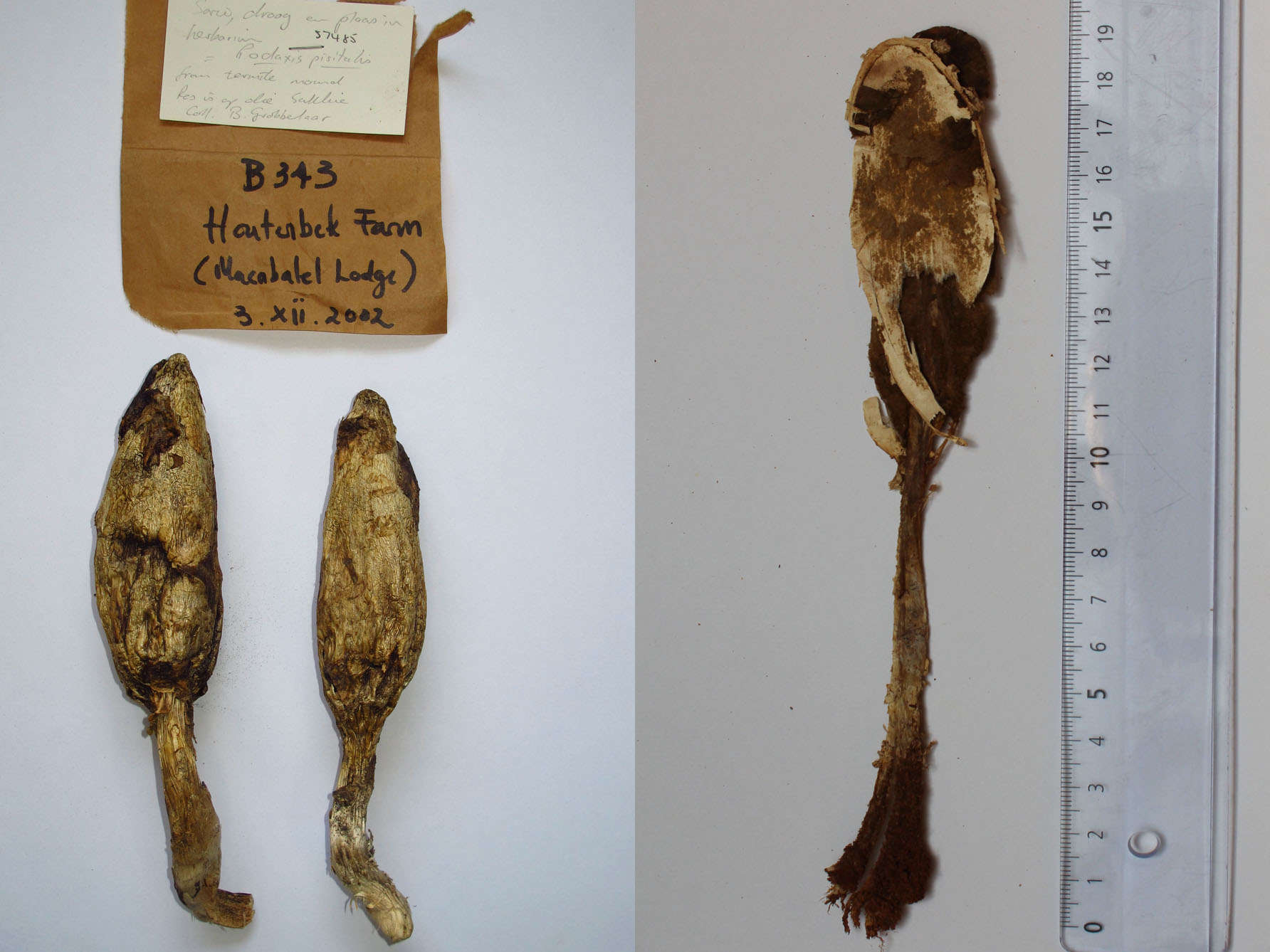Create a free profile to get unlimited access to exclusive videos, sweepstakes, and more!
Undead mushroom spores reanimated after hundreds of years prove fungus can survive almost anything

Fungi have been the stars of many B-horror movies for a reason. They’re everywhere, can take bizarre and almost alien forms, and even inspired the name of an Incubus album. Sometimes you don’t even know an invasion of spores is happening right under your feet. Now, some of those spores have just come back to life after 250 years.
In what could be called Rise of the Zombie Fungus, biologist Benjamin Schantz-Conlon of the University of Copenhagen unearthed the spores of Podaxis mushrooms that had originally been found by the Carl Linnaeus, often referred to as the Father of Modern Taxonomy, and were lurking in museum collections. Schantz-Conlon and his team wanted the answer to whether this different types of this fungus, which randomly grows either in deserts on on termite mounds, also differ in their genomic and physiological profile depending on where they lurk.
Another thing the scientists wanted to find out was how old Podaxis spores could get and still have the potential to be zombified. They suspected that the spores they brought back to life — ancient by fungal standards — might have a chance at reanimating because their DNA had not degraded much as opposed to most older samples.
“We reasoned that the spores could have adaptations to protect them (and their DNA) from desiccating in hostile environments and therefore had a feeling it might be possible to successfully revive old specimens,” Schantz-Conlon told SYFY WIRE. “That we could revive 250 year-old specimens was really more than we dared dream of.”
Podaxis, also known as the “desert coprinus” mushroom, can be unpredictable. They thrive in otherwise hostile and desolate environments where almost no other species of anything can make it. Something even stranger about them is that they will appear almost out of nowhere. The genome and physiology of desert-dwelling Podaxis was found to be different from their relatives that hang out on termite mounds, though both types, which are related to puffballs, basically look like dead squash blossoms.
Turns out that termite mound Podaxis have surprisingly smaller genomes with much fewer genes than the desert survivors.
Fewer genes may have evolved in Podaxis which coexist with termites because they are not able to tolerate stress in their surrounding environment as well as those that haunt the desert. Though termite mounds are strong defenses against microorganisms, the spores can somehow still germinate despite that and grow into rather large mushrooms. The downside of that is that these Podaxis do not have to compete for resources nearly as much as their cousins in the desert do. Schantz-Conlon, who recently published a study in Cell, believes it could explain why they did not develop as many genes.
“Our genomic and physiological analyses have shown that Podaxis in deserts appear to be more tolerant of biotic stress than those found exclusively in termite mounds,” he said. “They may have adapted to compete for scarce resources in arid environments, and their spores evolved to protect the biological material inside from all kinds of environmental stressors.”
This could also explain why desert Podaxis may seem to appear almost out of nowhere. Termite mound Podaxis don’t exactly have it that easy, either. Termites can survive in otherwise punishing climates. Vast dry expanses, where rain might not be on the forecast anytime soon, may have pushed these fungi to evolve spores that can wait for centuries, only morphing into mushrooms when conditions are right.
If Podaxis spores can survive for hundreds of years in some of the most remote and inhospitable regions on Earth, there might be other types of fungi that are also capable of waiting (almost) forever. Those that live on termite mounds may also give more insight as to how fungi that are typically loners can coexist with animals. Termite Podaxis can even elucidate more about fungal pathogens, from lethal black mold to irritating foot fungus.
“While some Podaxis are only found on termite mounds, others are both free-living and found with termites and these are genomically and physiologically similar to the fully free-living Podaxis,” Schantz-Conlon said. “This mirrors traits seen in opportunistic fungal pathogens.”
Even if a desert seems deserted, there is no denying that, even in the harshest of places, there is fungus among us.



























